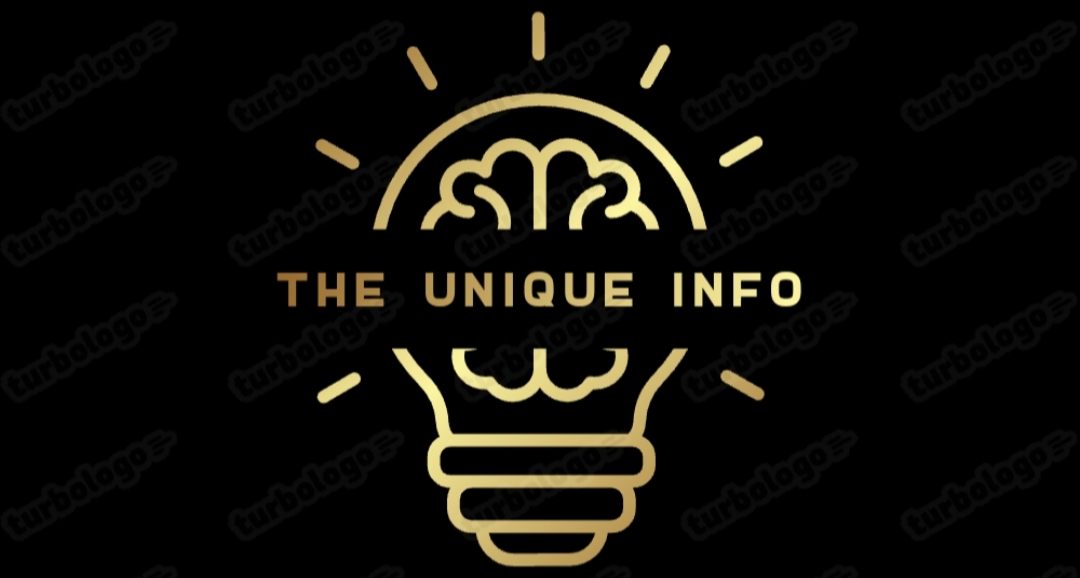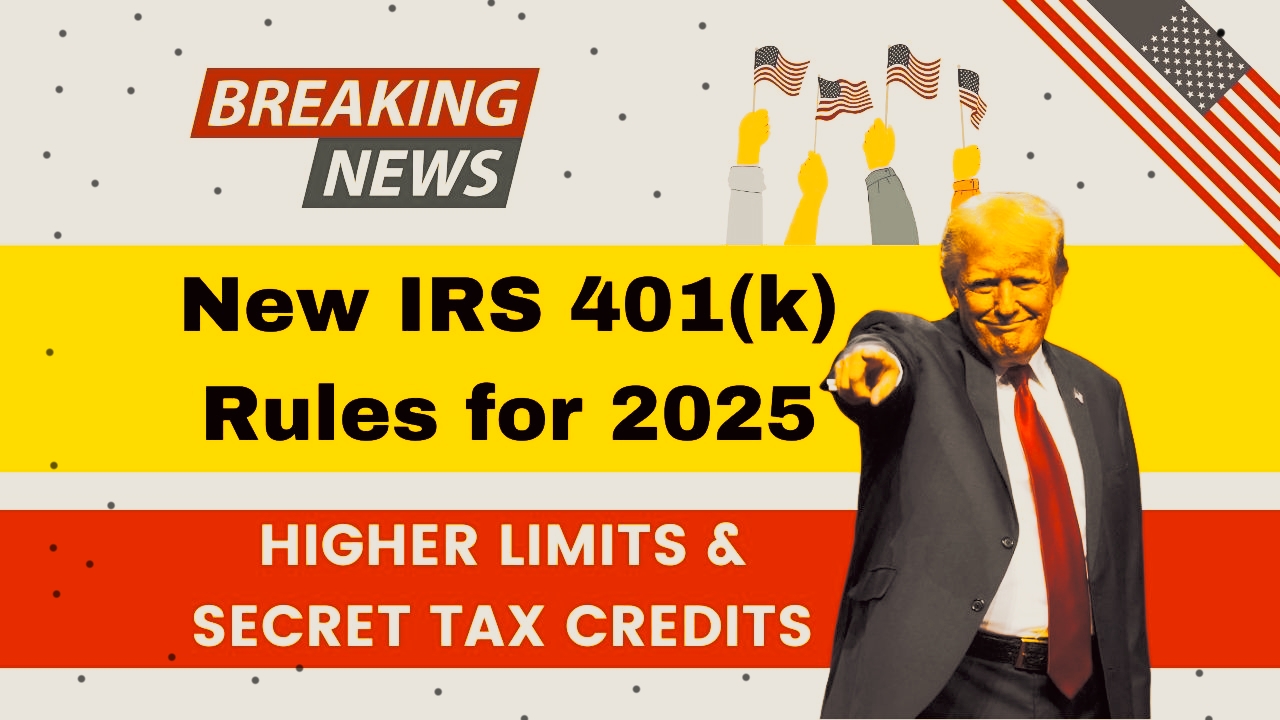The 401(k) plan has long been a cornerstone of retirement savings for millions of Americans, offering a tax-advantaged way to build a nest egg. However, navigating the complexities of 401(k) plans can feel like deciphering a financial puzzle. Recent regulatory changes, particularly those introduced under the SECURE 2.0 Act, have reshaped the 401(k) landscape, bringing new opportunities and considerations for savers. This article uncovers the latest 401(k) secrets, diving into the new rules, strategies, and tips to help you maximize your retirement savings. Whether you’re just starting your career or nearing retirement, these insights can empower you to make smarter decisions for your financial future.
𝗨𝗻𝗱𝗲𝗿𝘀𝘁𝗮𝗻𝗱𝗶𝗻𝗴 𝘁𝗵𝗲 𝟰𝟬𝟭(𝗸): 𝗔 𝗤𝘂𝗶𝗰𝗸 𝗥𝗲𝗳𝗿𝗲𝘀𝗵𝗲𝗿
A 401(k) is an employer-sponsored retirement plan that allows employees to save and invest a portion of their income before taxes are deducted. Contributions grow tax-deferred, meaning you don’t pay taxes on the earnings until you withdraw the funds, typically in retirement. Some plans also offer Roth 401(k) options, where contributions are made with after-tax dollars, but qualified withdrawals are tax-free.
The appeal of a 401(k) lies in its tax benefits, employer matching contributions (if offered), and the potential for long-term growth through investments like mutual funds, stocks, and bonds. However, recent legislative changes have introduced new rules that make 401(k) plans even more flexible and powerful. Let’s explore these updates and how they can supercharge your retirement strategy.
𝗧𝗵𝗲 𝗦𝗘𝗖𝗨𝗥𝗘 𝟮.𝟬 𝗔𝗰𝘁: 𝗔 𝗚𝗮𝗺𝗲-𝗖𝗵𝗮𝗻𝗴𝗲𝗿 𝗳𝗼𝗿 𝟰𝟬𝟭(𝗸) 𝗣𝗹𝗮𝗻𝘀
The SECURE 2.0 Act, signed into law in December 2022, builds on the original SECURE Act of 2019 and introduces a slew of provisions designed to enhance retirement savings. Many of these changes directly impact 401(k) plans, offering new opportunities to save more, access funds, and plan smarter. Below are the key updates that every American saver should know about.
𝗛𝗶𝗴𝗵𝗲𝗿 𝗖𝗼𝗻𝘁𝗿𝗶𝗯𝘂𝘁𝗶𝗼𝗻 𝗟𝗶𝗺𝗶𝘁𝘀 𝗳𝗼𝗿 𝗢𝗹𝗱𝗲𝗿 𝗪𝗼𝗿𝗸𝗲𝗿𝘀
One of the most significant changes under SECURE 2.0 is the increase in catch-up contributions for workers nearing retirement. Starting in 2025, individuals aged 60 to 63 can contribute up to $10,000 in catch-up contributions to their 401(k) plans, compared to the previous limit of $7,500 (for 2025, the standard contribution limit is $23,500, with an additional $7,500 for those 50 and older). This boost allows older workers to accelerate their savings as retirement approaches, potentially adding tens of thousands to their nest egg.
For example, if you’re 61 and max out the $10,000 catch-up contribution for three years, you could add $30,000 to your 401(k), not including investment growth. Over time, this could significantly enhance your retirement security, especially if invested in a diversified portfolio.
𝗔𝘂𝘁𝗼𝗺𝗮𝘁𝗶𝗰 𝗘𝗻𝗿𝗼𝗹𝗹𝗺𝗲𝗻𝘁 𝗕𝗲𝗰𝗼𝗺𝗲𝘀 𝘁𝗵𝗲 𝗡𝗼𝗿𝗺
Starting in 2025, new 401(k) plans must automatically enroll employees at a contribution rate of at least 3% of their salary, with automatic increases of 1% per year until reaching 10% (or higher, up to 15%). Employees can opt out, but studies show that automatic enrollment significantly boosts participation rates. According to the Employee Benefit Research Institute, plans with auto-enrollment have participation rates as high as 90%, compared to 50% for voluntary enrollment plans.
This change is a game-changer for younger workers or those who procrastinate on saving. By starting early, even small contributions can grow substantially over decades thanks to compound interest. For instance, a 25-year-old contributing $3,000 annually at a 7% return could amass over $500,000 by age 65.
𝗘𝗺𝗲𝗿𝗴𝗲𝗻𝗰𝘆 𝗦𝗮𝘃𝗶𝗻𝗴𝘀 𝗪𝗶𝘁𝗵𝗶𝗻 𝗬𝗼𝘂𝗿 𝟰𝟬𝟭(𝗸)
One of the biggest hurdles to consistent 401(k) contributions is unexpected financial emergencies. SECURE 2.0 addresses this by allowing employers to offer emergency savings accounts within 401(k) plans starting in 2024. Employees can contribute up to $2,500 annually to a separate, after-tax account that can be withdrawn penalty-free for emergencies.
This feature provides a safety net, encouraging workers to keep contributing to their retirement plan without fear of being unable to access funds when life throws a curveball. It’s a practical solution for balancing short-term needs with long-term goals.
𝗦𝘁𝘂𝗱𝗲𝗻𝘁 𝗟𝗼𝗮𝗻 𝗠𝗮𝘁𝗰𝗵𝗶𝗻𝗴 𝗖𝗼𝗻𝘁𝗿𝗶𝗯𝘂𝘁𝗶𝗼𝗻𝘀
For younger workers juggling student loan debt and retirement savings, SECURE 2.0 offers a groundbreaking benefit. Starting in 2024, employers can match 401(k) contributions based on an employee’s student loan payments. For example, if you pay $200 a month toward your student loans, your employer could contribute $200 to your 401(k) as a match, even if you’re not contributing directly to the plan yourself.
This provision is a lifeline for millennials and Gen Z workers burdened by student debt. It ensures that paying off loans doesn’t come at the expense of building retirement wealth, effectively allowing you to “double dip” on financial progress.
𝗘𝘅𝗽𝗮𝗻𝗱𝗲𝗱 𝗔𝗰𝗰𝗲𝘀𝘀 𝘁𝗼 𝗥𝗼𝘁𝗵 𝟰𝟬𝟭(𝗸) 𝗢𝗽𝘁𝗶𝗼𝗻𝘀
Roth 401(k) plans, which allow after-tax contributions with tax-free withdrawals in retirement, are becoming more attractive under SECURE 2.0. One key change is that employer matching contributions can now be directed to Roth accounts, starting in 2023. Previously, matches were always pre-tax, creating a tax liability in retirement. Now, you can opt for tax-free growth on both your contributions and your employer’s match.
Additionally, SECURE 2.0 eliminates required minimum distributions (RMDs) for Roth 401(k) accounts starting in 2024, aligning them with Roth IRAs. This means you can leave your Roth 401(k) funds invested indefinitely, providing greater flexibility for estate planning or late-in-life withdrawals.
𝗣𝗲𝗻𝗮𝗹𝘁𝘆-𝗙𝗿𝗲𝗲 𝗪𝗶𝘁𝗵𝗱𝗿𝗮𝘄𝗮𝗹𝘀 𝗳𝗼𝗿 𝗦𝗽𝗲𝗰𝗶𝗳𝗶𝗰 𝗦𝗶𝘁𝘂𝗮𝘁𝗶𝗼𝗻𝘀
SECURE 2.0 introduces several exceptions to the 10% early withdrawal penalty for 401(k) funds, making it easier to access your money without severe consequences. These include:
✓ Emergency Withdrawals: Starting in 2024, you can withdraw up to $1,000 per year for personal or family emergencies without the 10% penalty. You can repay the amount within three years to avoid taxes.
✓ Domestic Abuse Survivors: Victims of domestic abuse can withdraw up to $10,000 (or 50% of their account balance, whichever is less) penalty-free.
✓ Terminal Illness: Those diagnosed with a terminal illness can access funds without penalty, providing financial relief during a difficult time.
These provisions make 401(k) plans more flexible, addressing real-life scenarios where access to funds is critical.
𝗦𝘁𝗿𝗮𝘁𝗲𝗴𝗶𝗲𝘀 𝘁𝗼 𝗠𝗮𝘅𝗶𝗺𝗶𝘇𝗲 𝗬𝗼𝘂𝗿 𝟰𝟬𝟭(𝗸) 𝗨𝗻𝗱𝗲𝗿 𝘁𝗵𝗲 𝗡𝗲𝘄 𝗥𝘂𝗹𝗲𝘀
With these new rules in place, it’s time to rethink how you approach your 401(k). Here are actionable strategies to make the most of your plan and boost your retirement savings.
1. 𝙏𝙖𝙠𝙚 𝙁𝙪𝙡𝙡 𝘼𝙙𝙫𝙖𝙣𝙩𝙖𝙜𝙚 𝙤𝙛 𝙀𝙢𝙥𝙡𝙤𝙮𝙚𝙧 𝙈𝙖𝙩𝙘𝙝𝙞𝙣𝙜
If your employer offers a 401(k) match, prioritize contributing enough to capture the full match—it’s essentially free money. For example, if your employer matches 50% of contributions up to 6% of your salary, and you earn $60,000, contributing $3,600 annually secures an additional $1,800 from your employer. Over 30 years at a 7% return, that $1,800 annual match could grow to over $200,000.
With the new option to direct matches to a Roth 401(k), consider this if you expect to be in a higher tax bracket in retirement or want tax-free withdrawals.
2. 𝙇𝙚𝙫𝙚𝙧𝙖𝙜𝙚 𝘾𝙖𝙩𝙘𝙝-𝙐𝙥 𝘾𝙤𝙣𝙩𝙧𝙞𝙗𝙪𝙩𝙞𝙤𝙣𝙨
If you’re 50 or older, don’t overlook catch-up contributions. For those aged 60 to 63, the increased $10,000 limit starting in 2025 is a golden opportunity. Even if you can’t max out, contributing an extra $2,000 or $3,000 annually can make a big difference. Use a retirement calculator to estimate how much these contributions could add to your savings over time.
3. 𝘿𝙞𝙫𝙚𝙧𝙨𝙞𝙛𝙮 𝙔𝙤𝙪𝙧 𝙄𝙣𝙫𝙚𝙨𝙩𝙢𝙚𝙣𝙩𝙨
Your 401(k) investment options typically include mutual funds, index funds, target-date funds, and sometimes individual stocks or bonds. To maximize growth, diversify your portfolio across asset classes (stocks, bonds, and cash equivalents) and consider low-cost index funds, which often outperform actively managed funds over time. According to Vanguard, index funds have expense ratios as low as 0.04%, compared to 0.5% or higher for actively managed funds, saving you thousands in fees over decades.
Rebalance your portfolio annually to maintain your desired risk level, especially as you approach retirement.
4. 𝙐𝙨𝙚 𝙀𝙢𝙚𝙧𝙜𝙚𝙣𝙘𝙮 𝙎𝙖𝙫𝙞𝙣𝙜𝙨 𝘼𝙘𝙘𝙤𝙪𝙣𝙩𝙨 𝙒𝙞𝙨𝙚𝙡𝙮
If your employer offers the new emergency savings account within your 401(k), contribute to it as a safety net. This allows you to save for unexpected expenses without derailing your retirement contributions. Keep the account funded at a level that covers 3-6 months of essential expenses, and avoid tapping it for non-emergencies to preserve your retirement savings.
5. 𝘾𝙤𝙤𝙧𝙙𝙞𝙣𝙖𝙩𝙚 𝙬𝙞𝙩𝙝 𝙎𝙩𝙪𝙙𝙚𝙣𝙩 𝙇𝙤𝙖𝙣 𝙋𝙖𝙮𝙢𝙚𝙣𝙩𝙨
If you have student loans, check if your employer offers the new matching contribution program. Even if you can’t contribute directly to your 401(k), loan payments could trigger employer contributions, effectively building your retirement savings without additional out-of-pocket costs. This is particularly valuable for younger workers with limited disposable income.
6. 𝙋𝙡𝙖𝙣 𝙛𝙤𝙧 𝙏𝙖𝙭 𝙀𝙛𝙛𝙞𝙘𝙞𝙚𝙣𝙘𝙮
Decide whether a traditional or Roth 401(k) is better for your situation. If you’re early in your career and in a lower tax bracket, a Roth 401(k) may be ideal, as you’ll pay taxes now and enjoy tax-free withdrawals later. If you’re in a high tax bracket, a traditional 401(k) reduces your taxable income today. With the new Roth match and RMD rules, the Roth option is increasingly attractive for long-term planning.
7. 𝘼𝙫𝙤𝙞𝙙 𝙀𝙖𝙧𝙡𝙮 𝙒𝙞𝙩𝙝𝙙𝙧𝙖𝙬𝙖𝙡𝙨, 𝘽𝙪𝙩 𝙆𝙣𝙤𝙬 𝙔𝙤𝙪𝙧 𝙊𝙥𝙩𝙞𝙤𝙣𝙨
While it’s best to leave your 401(k) untouched until retirement, the new penalty-free withdrawal options provide flexibility. Use these sparingly and only for true emergencies, as early withdrawals reduce you8r retirement savings and potential growth. If you do withdraw, explore the repayment option for emergency withdrawals to restore your account balance.
𝗖𝗼𝗺𝗺𝗼𝗻 𝟰𝟬𝟭(𝗸) 𝗠𝗶𝘀𝘁𝗮𝗸𝗲𝘀 𝘁𝗼 𝗔𝘃𝗼𝗶𝗱
Even with the new rules, certain pitfalls can undermine your 401(k) success. Here are mistakes to steer clear of:
✓ Not Contributing Enough: Failing to contribute at least enough to get the employer match is like leaving money on the table.
✓ Ignoring Fees: High expense ratios on funds can erode your returns. Always check the fees of your investment options and opt for low-cost funds when possible.
✓ Over-Reliance on Target-Date Funds: While convenient, target-date funds may not align perfectly with your risk tolerance or retirement goals. Review their allocations to ensure they suit your needs.
✓ Cashing Out When Changing Jobs: When leaving a job, roll over your 401(k) to an IRA or your new employer’s plan instead of cashing out. Cashing out triggers taxes and penalties, plus it halts your savings growth.
✓ Neglecting to Update Beneficiaries: Life changes like marriage or divorce require updating your 401(k) beneficiaries to ensure your savings go to the right person.
𝗧𝗵𝗲 𝗙𝘂𝘁𝘂𝗿𝗲 𝗼𝗳 𝟰𝟬𝟭(𝗸) 𝗣𝗹𝗮𝗻𝘀: 𝗪𝗵𝗮𝘁 𝘁𝗼 𝗪𝗮𝘁𝗰𝗵 𝗙𝗼𝗿
The SECURE 2.0 Act is just the beginning of potential changes to retirement plans. Proposed legislation and regulatory shifts could further expand contribution limits, enhance tax benefits, or introduce new investment options. Stay informed by reviewing your plan’s annual updates and consulting with a financial advisor to adapt your strategy as rules evolve.
Additionally, keep an eye on workplace trends. More employers are offering financial wellness programs, including 401(k) education and personalized advice. Take advantage of these resources to optimize your savings and avoid common pitfalls.
𝗖𝗼𝗻𝗰𝗹𝘂𝘀𝗶𝗼𝗻: 𝗧𝗮𝗸𝗲 𝗖𝗼𝗻𝘁𝗿𝗼𝗹 𝗼𝗳 𝗬𝗼𝘂𝗿 𝟰𝟬𝟭(𝗸) 𝗧𝗼𝗱𝗮𝘆
The new rules under SECURE 2.0 have unlocked a wealth of opportunities to supercharge your 401(k) savings. From higher catch-up contributions to emergency savings accounts and student loan matches, these changes make 401(k) plans more flexible and accessible than ever. By understanding these updates and implementing smart strategies—maximizing employer matches, diversifying investments, and planning for tax efficiency—you can build a robust retirement nest egg.

